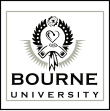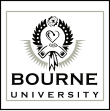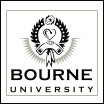© bOURNE uNIVERSITY 2021
Historical linguists speculate that the Book of Gates is written in an extinct language
that originated on what it calls Yidath - the First Continent. Science supports earth
forming geological processes that have created large landmasses in the remote past
that have either sunken or collided to form our modern world continents.
A small selection of photos from Jebidiah Smith's Dioramas of Yidath, produced in 1869
for the period's newspapers and exhibits. Well recieved by the public, they introduce the
ancient ancestors of modern animals in what Smith called "regressive evolution" after
his participation in the Oxford Evoluion Debate at the Oxford University Museum on
June 30, 1860. Right to Left: Sammaarles In The Ollhatla Desert. The Bbbogug Attack
Kaz.
Right to Left: Three Ih-ygg Titans Stride the D’ggon Plains. Go-ur Calf Attacked By Men
of Dloth.
The text was written by men on stone tablets after that continent sank
beneath the sea, and describes an ancient history far different from
modern science, and a differing origin of modern life.
It also contains the history of the First Men, the First Gods and the
Children of Yidath.
According to Oxford Professor Jebidiah Smith in the Commentary, the
Book of Gates reveals that Yidath arose during the Archean eon and
records histories reaching back some 4 billion years ago to the First
Men of Dloth, who built cities on that great "Continent of Horrors" and
were oppressed by the immortal First Gods.
In the Book of Gates, the "Children of Yidath" are identified as the
"root of all that lives today" and has been abridged as meaning the
modern "animal world" which according to the Commentary are the
Children's smaller descendants being " a mere shadow of their
monstrous forms" when evolution regressed the Earth's biological life
to their modern forms today.
Highmore Rare Book & Manuscript Library, London possesses the largest collection of
priceless, historical and immensely rare books known through the world. It provides the
finest authentication faciltiy for antique book appraisals used by renowned institutions.
Highmore Rare Book & Manuscript Library, London, where the ancient codex was sent in
2017 and has undergone newly derived scanning techniques for revealing deteriorating
pages of books too fragile to open.
"In the iconic Nurubi Fragments Izal is clearly seen from transferring
the 'Dlothian" characters from ancient stone tablets to producing the
first Book of Gates - not translating," said Professor H. Philip Stannard
of the Courtland Institute of Prehistory and Archaeological Studies.
"Izal is fulfilling his mission of becoming a Prophet".
"Izal scribed the stone tablets from the original Dlothian, the language
of the First Men, into the Book of Gates in their original language for
the First Gods."
Professor Stannard, one of the most eminent authorities to scholar
research on Jebidiah Smith's 'A Commentary on the Book of Gates',
stated the ancient tome has a long presence tracing back to Jemdet
Nasr's first recollection in 3200 BC to our modern day, noted in
recorded history each 1000 years - an event known astronomically as
the "Circle of Eternity".
The Nurubi Fragments historically testified to Izal's mission during the
Corean era.
Professor Stannard, who authored the Institute's Faculty Committee of
Prehistoric Studies most influential thesis "Fact or Fiction: An
Investigation of the Book of Gates Phenomenon", stated the book
provides another version of Creationism-Evolutionism, a prerequisite
that qualifies the "gospel" work with beliefs similar to the world's other
religions.
The Book of Gates mention is found in the Nurubi Fragments that were unearthed in
1852 near the ruins in Nineveh, Iraq by an English archaeologist. The tome records to
have originated from the Caspian Sea 100,000 years ago, where recent findings have
uncovered ruins of an unknown Eemian culture (locations marked in highlighted circles).
A significant revelation attributed to the Book of Gates as abridged by
Smith's work in 'A Commentary on the Book of Gates' (First printing
1868) - is the correlation of modern discoveries unknown in England's
19th century Oxford University. Science has "rediscovered" several
enigmas revealed in the ancient manuscript.
In the pages of the Book of Gates, Jebidiah Smith tells us that life
began during the Archean Eon on the first, primal continent Yidath.
"Today we have startling evidences of microscopic fossils found in a
3.5 billion year old rock in western Australia - the oldest fossils ever
found on the Earth ", Stannard noted.
"Several years ago a mysterious blue "sphere" was photographed by
Nasa's SECCHI spacecraft crossing the Sun: an unknown body where
any space agencies believed a planetoid retained an orbit. The Book of
Gates mentions an ancient, second moon of Earth called Yith, that was
composed of blue rocks, metals and other elements."
When these fascinating revelations are examined, as the book and
ancient characters have been revealed to us, they provide an exciting
alternative into the origin of Earth.
The ancient book has been speculated by experts to detail the history of the continent
of Yidath that arose during the Archeon Era.
Fossilized stromatolites were believed to be the earliest lifeforms to have appeared on
Earth some 3.7 billion years old. Recent discoveries have found evidence of even older
biological evolution - corroborating the Book of Gates accounts.
Several years ago a mysterious blue "sphere" was photographed by Nasa's SECCHI
spacecraft crossing the Sun: experts speculated the probe uncovered an unknown
planetoid. The Book of Gates mentions an ancient, first moon of Earth called Yith, that
was composed of blue rocks and metals. Artist's conception.
Scholars have noted the Book of Gates does indeed contradict with the
world's major religions as it mostly records on the First Gods, of the
redemption of the modern animal species and corresponds with Izal's
ministry of revealing the histories of Yidath as recorded by the
hagiographer Vol Hom in the Nurubi Fragments.
Already, several distinguished universities are officially petitioning for
more independent confirmation into the origin of the Book of Gates.
"Since 2017, the Highmore Rare Book & Manuscript Library in England
under the direction of respected theologians from the Association of
Theological Colleges have been examining the fragile manuscript,
where they have placed the artifact under intense scrutiny," said
historian and philologist E. R. McCready of the Courtland Institute.
"Our findings are more and more promising with each initial
observation," he said. "The lead investigators have determined the
manuscript could "challenge the currently accepted theories of human
history."
Prompting caution, Eugene Carter, senior research professor of Near
Eastern Archaeology at the Newberry Museum of Primitive Cultures
said more open investigation needs to be conducted before the book
can be authenticated.
Most believe the Book of Gates is merely a religious document, and
has not yet been validated to be used with archaeological or geological
sciences, wrote the Smithsonian Institution.














CURRENT ISSUE

Member Since May 1922
Explore
Discover
Find
Catalog
Publish
Reward

LONDON-ROME-BERLIN-MOSCOW-NAPLES


Recent Articles
Proud Sponsor of Bourne’s Journal
Sponsored Works
News of the World



Rare Ancient Manuscript Revealed by
Cambridge University Could Be Oldest Book
Known - Part Two

THE BOURNE JOURNAL OF
ARCHAEOLOGY



PAGE TWO
I




related posts
SHARE ON:
SHARE ON:
© bOURNE uNIVERSITY 2021
Historical linguists speculate that the Book of Gates is written in an extinct language
that originated on what it calls Yidath - the First Continent. Science supports earth
forming geological processes that have created large landmasses in the remote past
that have either sunken or collided to form our modern world continents.
A small selection of photos from Jebidiah Smith's Dioramas of Yidath, produced in 1869
for the period's newspapers and exhibits. Well recieved by the public, they introduce the
ancient ancestors of modern animals in what Smith called "regressive evolution" after
his participation in the Oxford Evoluion Debate at the Oxford University Museum on
June 30, 1860. Right to Left: Sammaarles In The Ollhatla Desert. The Bbbogug Attack
Kaz.
Right to Left: Three Ih-ygg Titans Stride the D’ggon Plains. Go-ur Calf Attacked By Men
of Dloth.
The text was written by men on stone tablets after that continent sank
beneath the sea, and describes an ancient history far different from
modern science, and a differing origin of modern life.
It also contains the history of the First Men, the First Gods and the
Children of Yidath.
According to Oxford Professor Jebidiah Smith in the Commentary, the
Book of Gates reveals that Yidath arose during the Archean eon and
records histories reaching back some 4 billion years ago to the First
Men of Dloth, who built cities on that great "Continent of Horrors" and
were oppressed by the immortal First Gods.
In the Book of Gates, the "Children of Yidath" are identified as the
"root of all that lives today" and has been abridged as meaning the
modern "animal world" which according to the Commentary are the
Children's smaller descendants being " a mere shadow of their
monstrous forms" when evolution regressed the Earth's biological life
to their modern forms today.
Highmore Rare Book & Manuscript Library, London possesses the largest collection of
priceless, historical and immensely rare books known through the world. It provides the
finest authentication faciltiy for antique book appraisals used by renowned institutions.
Highmore Rare Book & Manuscript Library, London, where the ancient codex was sent in
2017 and has undergone newly derived scanning techniques for revealing deteriorating
pages of books too fragile to open.
"In the iconic Nurubi Fragments Izal is clearly seen from transferring
the 'Dlothian" characters from ancient stone tablets to producing the
first Book of Gates - not translating," said Professor H. Philip Stannard
of the Courtland Institute of Prehistory and Archaeological Studies.
"Izal is fulfilling his mission of becoming a Prophet".
"Izal scribed the stone tablets from the original Dlothian, the language
of the First Men, into the Book of Gates in their original language for
the First Gods."
Professor Stannard, one of the most eminent authorities to scholar
research on Jebidiah Smith's 'A Commentary on the Book of Gates',
stated the ancient tome has a long presence tracing back to Jemdet
Nasr's first recollection in 3200 BC to our modern day, noted in
recorded history each 1000 years - an event known astronomically as
the "Circle of Eternity".
The Nurubi Fragments historically testified to Izal's mission during the
Corean era.
Professor Stannard, who authored the Institute's Faculty Committee of
Prehistoric Studies most influential thesis "Fact or Fiction: An
Investigation of the Book of Gates Phenomenon", stated the book
provides another version of Creationism-Evolutionism, a prerequisite
that qualifies the "gospel" work with beliefs similar to the world's other
religions.
The Book of Gates mention is found in the Nurubi Fragments that were unearthed in
1852 near the ruins in Nineveh, Iraq by an English archaeologist. The tome records to
have originated from the Caspian Sea 100,000 years ago, where recent findings have
uncovered ruins of an unknown Eemian culture (locations marked in highlighted circles).
A significant revelation attributed to the Book of Gates as abridged by
Smith's work in 'A Commentary on the Book of Gates' (First printing
1868) - is the correlation of modern discoveries unknown in England's
19th century Oxford University. Science has "rediscovered" several
enigmas revealed in the ancient manuscript.
In the pages of the Book of Gates, Jebidiah Smith tells us that life
began during the Archean Eon on the first, primal continent Yidath.
"Today we have startling evidences of microscopic fossils found in a
3.5 billion year old rock in western Australia - the oldest fossils ever
found on the Earth ", Stannard noted.
"Several years ago a mysterious blue "sphere" was photographed by
Nasa's SECCHI spacecraft crossing the Sun: an unknown body where
any space agencies believed a planetoid retained an orbit. The Book of
Gates mentions an ancient, second moon of Earth called Yith, that was
composed of blue rocks, metals and other elements."
When these fascinating revelations are examined, as the book and
ancient characters have been revealed to us, they provide an exciting
alternative into the origin of Earth.
The ancient book has been speculated by experts to detail the history of the continent
of Yidath that arose during the Archeon Era.
Fossilized stromatolites were believed to be the earliest lifeforms to have appeared on
Earth some 3.7 billion years old. Recent discoveries have found evidence of even older
biological evolution - corroborating the Book of Gates accounts.
Several years ago a mysterious blue "sphere" was photographed by Nasa's SECCHI
spacecraft crossing the Sun: experts speculated the probe uncovered an unknown
planetoid. The Book of Gates mentions an ancient, first moon of Earth called Yith, that
was composed of blue rocks and metals. Artist's conception.
Scholars have noted the Book of Gates does indeed contradict with the
world's major religions as it mostly records on the First Gods, of the
redemption of the modern animal species and corresponds with Izal's
ministry of revealing the histories of Yidath as recorded by the
hagiographer Vol Hom in the Nurubi Fragments.
Already, several distinguished universities are officially petitioning for
more independent confirmation into the origin of the Book of Gates.
"Since 2017, the Highmore Rare Book & Manuscript Library in England
under the direction of respected theologians from the Association of
Theological Colleges have been examining the fragile manuscript,
where they have placed the artifact under intense scrutiny," said
historian and philologist E. R. McCready of the Courtland Institute.
"Our findings are more and more promising with each initial
observation," he said. "The lead investigators have determined the
manuscript could "challenge the currently accepted theories of human
history."
Prompting caution, Eugene Carter, senior research professor of Near
Eastern Archaeology at the Newberry Museum of Primitive Cultures
said more open investigation needs to be conducted before the book
can be authenticated.
Most believe the Book of Gates is merely a religious document, and
has not yet been validated to be used with archaeological or geological
sciences, wrote the Smithsonian Institution.









Rare Ancient Manuscript Revealed by
Cambridge University Could Be Oldest Book
Known - Part Two
PAGE TWO
I


Recent Articles

Sponsored Works
THE BOURNE JOURNAL OF
ARCHAEOLOGY








related posts
SHARE ON:
SHARE ON:

Proud Sponsor of Bourne’s Journal

© bOURNE uNIVERSITY 2021
Historical linguists speculate that the Book of Gates is
written in an extinct language that originated on what it
calls Yidath - the First Continent. Science supports earth
forming geological processes that have created large
landmasses in the remote past that have either sunken
or collided to form our modern world continents.
A small selection of photos from Jebidiah Smith's
Dioramas of Yidath, produced in 1869 for the period's
newspapers and exhibits. Well recieved by the public,
they introduce the ancient ancestors of modern animals
in what Smith called "regressive evolution" after his
participation in the Oxford Evoluion Debate at the Oxford
University Museum on June 30, 1860. Right to Left:
Sammaarles In The Ollhatla Desert. The Bbbogug Attack
Kaz.
Right to Left: Three Ih-ygg Titans Stride the D’ggon
Plains. Go-ur Calf Attacked By Men of Dloth.
The text was written by men on stone
tablets after that continent sank beneath the
sea, and describes an ancient history far
different from modern science, and a
differing origin of modern life.
It also contains the history of the First Men,
the First Gods and the Children of Yidath.
According to Oxford Professor Jebidiah Smith
in the Commentary, the Book of Gates
reveals that Yidath arose during the Archean
eon and records histories reaching back
some 4 billion years ago to the First Men of
Dloth, who built cities on that great
"Continent of Horrors" and were oppressed
by the immortal First Gods.
In the Book of Gates, the "Children of
Yidath" are identified as the "root of all that
lives today" and has been abridged as
meaning the modern "animal world" which
according to the Commentary are the
Children's smaller descendants being " a
mere shadow of their monstrous forms"
when evolution regressed the Earth's
biological life to their modern forms today.
Highmore Rare Book & Manuscript Library, London
possesses the largest collection of priceless, historical
and immensely rare books known through the world. It
provides the finest authentication faciltiy for antique
book appraisals used by renowned institutions.
Highmore Rare Book & Manuscript Library, London,
where the ancient codex was sent in 2017 and has
undergone newly derived scanning techniques for
revealing deteriorating pages of books too fragile to
open.
"In the iconic Nurubi Fragments Izal is
clearly seen from transferring the 'Dlothian"
characters from ancient stone tablets to
producing the first Book of Gates - not
translating," said Professor H. Philip
Stannard of the Courtland Institute of
Prehistory and Archaeological Studies. "Izal
is fulfilling his mission of becoming a
Prophet".
"Izal scribed the stone tablets from the
original Dlothian, the language of the First
Men, into the Book of Gates in their original
language for the First Gods."
Professor Stannard, one of the most eminent
authorities to scholar research on Jebidiah
Smith's 'A Commentary on the Book of
Gates', stated the ancient tome has a long
presence tracing back to Jemdet Nasr's first
recollection in 3200 BC to our modern day,
noted in recorded history each 1000 years -
an event known astronomically as the "Circle
of Eternity".
The Nurubi Fragments historically testified to
Izal's mission during the Corean era.
Professor Stannard, who authored the
Institute's Faculty Committee of Prehistoric
Studies most influential thesis "Fact or
Fiction: An Investigation of the Book of
Gates Phenomenon", stated the book
provides another version of Creationism-
Evolutionism, a prerequisite that qualifies
the "gospel" work with beliefs similar to the
world's other religions.
The Book of Gates mention is found in the Nurubi
Fragments that were unearthed in 1852 near the ruins in
Nineveh, Iraq by an English archaeologist. The tome
records to have originated from the Caspian Sea 100,000
years ago, where recent findings have uncovered ruins of
an unknown Eemian culture (locations marked in
highlighted circles).
A significant revelation attributed to the
Book of Gates as abridged by Smith's work
in 'A Commentary on the Book of Gates'
(First printing 1868) - is the correlation of
modern discoveries unknown in England's
19th century Oxford University. Science has
"rediscovered" several enigmas revealed in
the ancient manuscript.
In the pages of the Book of Gates, Jebidiah
Smith tells us that life began during the
Archean Eon on the first, primal continent
Yidath.
"Today we have startling evidences of
microscopic fossils found in a 3.5 billion year
old rock in western Australia - the oldest
fossils ever found on the Earth ", Stannard
noted.
"Several years ago a mysterious blue
"sphere" was photographed by Nasa's
SECCHI spacecraft crossing the Sun: an
unknown body where any space agencies
believed a planetoid retained an orbit. The
Book of Gates mentions an ancient, second
moon of Earth called Yith, that was
composed of blue rocks, metals and other
elements."
When these fascinating revelations are
examined, as the book and ancient
characters have been revealed to us, they
provide an exciting alternative into the origin
of Earth.
The ancient book has been speculated by experts to
detail the history of the continent of Yidath that arose
during the Archeon Era.
Fossilized stromatolites were believed to be the earliest
lifeforms to have appeared on Earth some 3.7 billion
years old. Recent discoveries have found evidence of
even older biological evolution - corroborating the Book
of Gates accounts.
Several years ago a mysterious blue "sphere" was
photographed by Nasa's SECCHI spacecraft crossing the
Sun: experts speculated the probe uncovered an
unknown planetoid. The Book of Gates mentions an
ancient, first moon of Earth called Yith, that was
composed of blue rocks and metals. Artist's conception.
Scholars have noted the Book of Gates does
indeed contradict with the world's major
religions as it mostly records on the First
Gods, of the redemption of the modern
animal species and corresponds with Izal's
ministry of revealing the histories of Yidath
as recorded by the hagiographer Vol Hom in
the Nurubi Fragments.
Already, several distinguished universities
are officially petitioning for more
independent confirmation into the origin of
the Book of Gates.
"Since 2017, the Highmore Rare Book &
Manuscript Library in England under the
direction of respected theologians from the
Association of Theological Colleges have
been examining the fragile manuscript,
where they have placed the artifact under
intense scrutiny," said historian and
philologist E. R. McCready of the Courtland
Institute.
"Our findings are more and more promising
with each initial observation," he said. "The
lead investigators have determined the
manuscript could "challenge the currently
accepted theories of human history."
Prompting caution, Eugene Carter, senior
research professor of Near Eastern
Archaeology at the Newberry Museum of
Primitive Cultures said more open
investigation needs to be conducted before
the book can be authenticated.
Most believe the Book of Gates is merely a
religious document, and has not yet been
validated to be used with archaeological or
geological sciences, wrote the Smithsonian
Institution.









THE BOURNE JOURNAL OF
ARCHAEOLOGY



PAGE TWO
I



PAGE TWO
I
Rare Ancient Manuscript Revealed by
Cambridge University Could Be Oldest
Book Known - Part Two
SHARE ON:
SHARE ON:


Member Since May 1922
Explore
Discover
Find
Catalog
Publish
Reward

LONDON-ROME-BERLIN-MOSCOW-NAPLES



Proud Sponsor of Bourne’s Journal


Like our Sponser





